A dream road trip requires not only cool destinations but inspiring travel along the way. Ask dedicated skiers and snowboarders what their dream trip looks like and you’re bound to hear the phrase “Powder Highway” come up more than once. The 630-mile stretch runs along Route 95A through British Columbia and into Alberta, with dozens of ski resorts and even more options for backcountry touring en route. South of the border, the US has a similar stretch of road – albeit one that runs north to south without nearly as much fanfare: US Highways 191 and 89 from Bozeman, Montana, to Ogden, Utah.
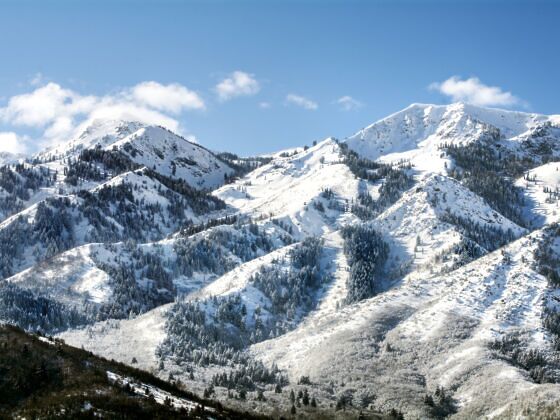

This Rockies Road Trip Is America’s Answer to Canada’s ‘Powder Highway’
Along the way, you can stop at some of the country’s most iconic and challenging ski resorts, including Bridger Bowl, Big Sky Resort, Jackson Hole Mountain Resort, Snowbasin, and Powder Mountain. Backcountry touring abounds along the way at trailheads throughout the Bridgers and Madisons of Montana, the Wasatch of Utah, and the Tetons of Wyoming. The peaks are some of the highest and most dramatic in the Rockies. But the best part is that nowhere along this route will you encounter the traffic and lift lines that clog more popular ski thoroughfares like Colorado’s I-70 corridor and Utah’s Little and Big Cottonwood Canyons.
We hope you love the spaces and stays we recommend! Just so you know, Matador may collect a small commission from the links on this page if you decide to book a stay. Listed prices are accurate as of the time of publication.
Trip logistics
Plan at least a week to include drive time and a day at each spot (more time means more powder turns). You’ll need a four-wheel-drive vehicle to handle windy mountain passes and inclement weather, and a YETI cooler in which to stock snacks and suds for the road. Also, pro skier Celestre Pomerantz runs down all the gear you should pack for the trip. If arriving by air, fly into Bozeman Yellowstone Airport (BZN). Here, you can rent a car onsite and return it at Salt Lake City International Airport (SLC) or in Ogden.
Start at Bridger Bowl Ski Area
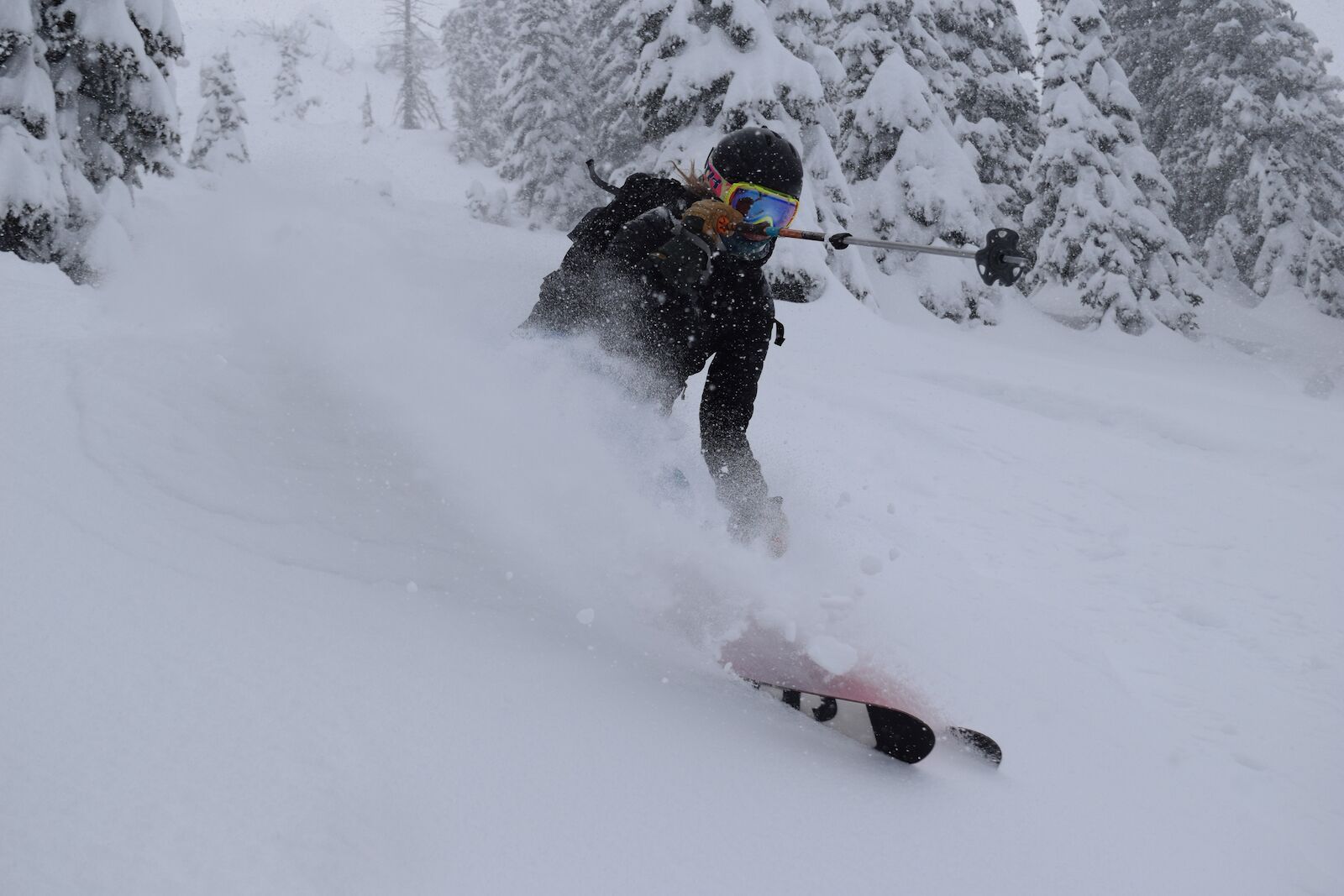
Photo: alex95king/Shutterstock
Technically, this dream American ski trip starts by heading just north of Bozeman on US Highway 86 to Bridger Bowl Ski Area. The non-profit resort is home to some of the most extreme in-bounds terrain in the United States, perhaps second only to another stop on this road trip, Jackson Hole Mountain Resort.
In the rugged beauty of Montana’s Bridger Range, Bridger Bowl boasts a diverse selection of steep chutes, challenging couloirs, and tree-lined runs that cater to the most seasoned and daring skiers and riders. The Bridger Ridge offers some of the most thrilling in-bounds extreme terrain in the region, with iconic runs such as the “Ridge” and “The Fingers” providing a heart-pounding descent – having backcountry safety gear is a good idea here. The consistent snowfall, coupled with the absence of heavy crowds, ensures that expert skiers can carve through pristine powder and tackle demanding lines without the usual congestion found at major resorts. With a reputation for maintaining a raw, unpretentious atmosphere, Bridger Bowl kicks off this road trip with big lines, big days, and beers that don’t cost you $15 each.
Where to stay in Bozeman
In Bozeman, stay at The LARK, a remodeled motel designed for outdoor adventures and remote workers. The property is located in the heart of town and puts you nearby to breweries, dining, and nightlife, as well as gear shops if you need to grab a new set of gloves or have your skis waxed before hitting the slopes.
Backcountry touring zones near Bozeman
- Hyalite Canyon: Hyalite Canyon, located south of Bozeman, is known for its diverse backcountry terrain.
- Beehive Basin: This area is known for its stunning scenery and offers a range of backcountry lines.
- Yellow Mule Trail: Located in the Gallatin National Forest, the Yellow Mule Trail offers backcountry skiing with beautiful views of the surrounding peaks, and it’s a great option en route to Big Sky.
- Lick Creek Trail: This trail is situated in the Gallatin Range and provides opportunities for late-season backcountry skiing and snowboarding.
- Porcupine Creek Trail: Another trail in the Gallatin Range, Porcupine Creek Trail extends to several different descent options from a single trailhead.
- Mount Blackmore: This peak in the Bridger Range is a popular destination for backcountry skiers and snowboarders.
Head south to Big Sky
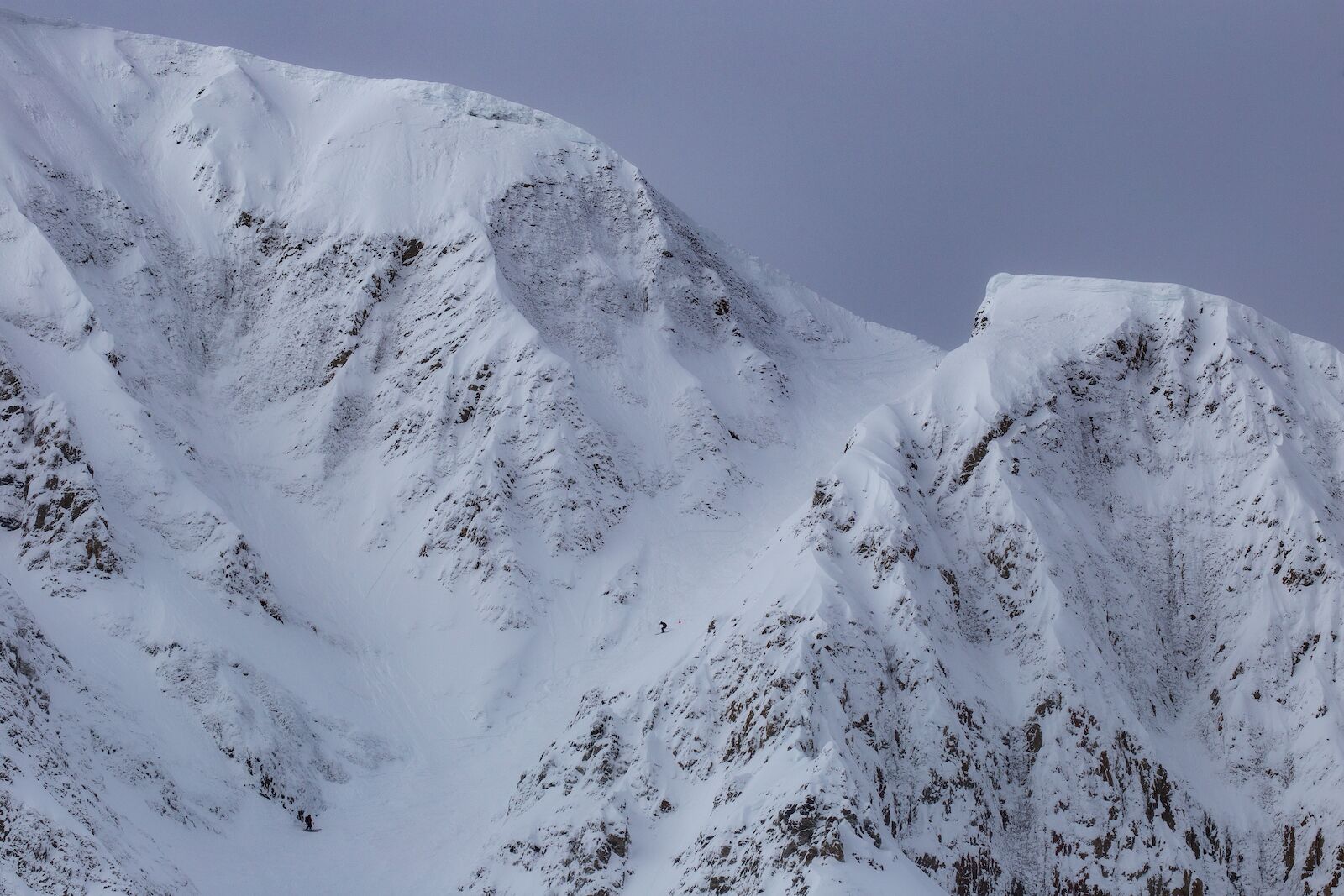
Photo: CSNafzger /Shutterstock
Equally epic for big lines, but also offering more upscale resort amenities, Big Sky Resort is part of America’s last frontier of big-mountain skiing at major resorts. Here, the iconic Big Couloir drops 1,400 feet from near the top of Lone Mountain following an entrance point that pits skiers and riders at 45 degrees staring down one of the most intense in-bounds lines in the world. Tight turns and sharp edges are mandatory. The resort features more challenging terrain than is possible to hit in one day, so don’t get overwhelmed looking at the trail map. Get up the new tram to 11,166 feet atop Lone Mountain, and any way down you choose (Big Couloir is open depending on snow and safety conditions) is worthy of a toast at Westward Social once you make it back to Big Sky’s Mountain Village.
Where to stay at Big Sky
The town of Big Sky offers many great Airbnb rentals, some of which are ideal for larger groups. For easier access to the lifts, the Summit Hotel at Big Sky Resort has high-end rooms in a mountain lodge-style property, complete with onsite dining, happy hour options, and a gear shop.
Backcountry touring zones near Big Sky
- Beehive Basin: Located near Big Sky, Beehive Basin offers stunning scenery and a variety of backcountry terrain.
- Spanish Peaks: The Spanish Peaks area, including Fan Mountain and Cedar Mountain, provides backcountry enthusiasts with challenging terrain.
- Yellow Mule Trail: This trail, located in the Gallatin National Forest, offers backcountry skiing opportunities that are closer to Big Sky than Bozeman.
- Lone Mountain Ranch: While Lone Mountain Ranch is known for its groomed cross-country trails, it also provides access to some backcountry areas for more advanced skiers and snowboarders.
- Taylor Fork Area: South of Big Sky, the Taylor Fork area has numerous backcountry options with a mix of open slopes and tree skiing.
- Jack Creek Area: Located near Big Sky Resort, the Jack Creek area has backcountry terrain accessible from the resort boundaries.
- Lick Creek Trail: Situated in the Gallatin Range, the Lick Creek Trail offers backcountry skiing opportunities that also make a good place to stop in between Bozeman and Big Sky.
Further reading on skiing and traveling in the area
- Big Sky Is the Final Frontier for Big-Mountain Resort Skiing
- 7 Reasons Your Next Ski Trip Should Be To Yellowstone Country Montana
- This Trendy Bozeman Motel Is Perfect for Remote Work With Low Rates Through Winter
Jackson Hole Mountain Resort
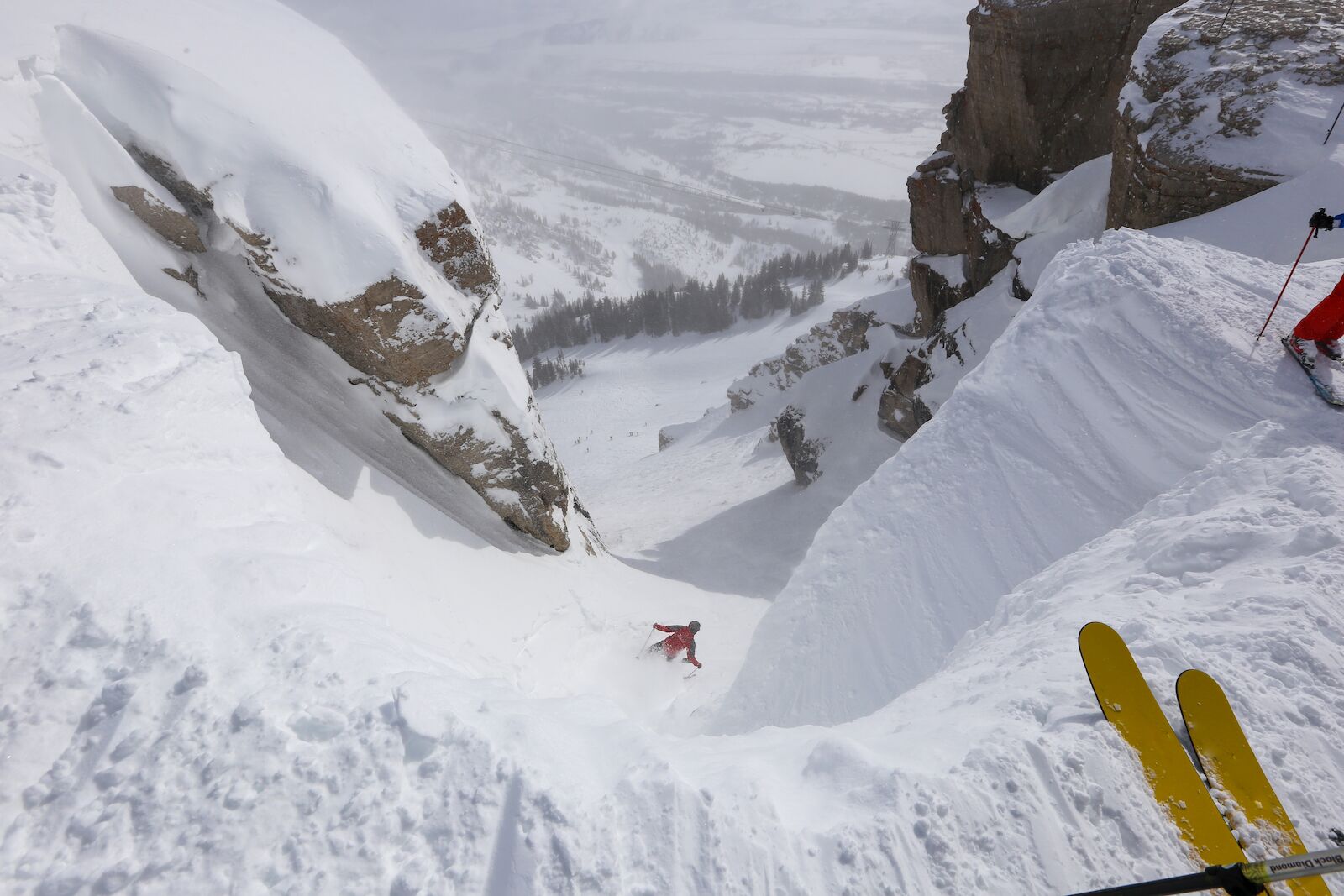
Photo: CSNafzger /Shutterstock
While waiting in line for the Jackson Hole Aerial Tram, which takes skiers from the resort’s base up 4,139 feet to the top of Rendevous Mountain, you’ll see a warning sign that begins with the following statement: “Our mountain is like nothing you’ve ever skied before.” It then implores visitors to “Give this special mountain the respect it demands.” Jackson Hole Mountain Resort, with its iconic Corbet’s Couloir and the expansive expert zones like the Hobacks and the Alta Chutes, has bred pro skiers and riders including Travis Rice, Resi Stiegler, and Kai Jones, and residents in nearby Jackson include transplanted pros from around the world drawn by the above-mentioned terrain, gnarly surrounding backcountry, and the nearly 400 inches of annual powder snow.
The resort’s commitment to maintaining challenging and varied terrain, including open bowls, tight chutes, and gladed tree runs, ensures that those at the forefront of the sports can continually push their limits. Four Burton Stash Parks, terrain parks comprised of natural features like tree jibs and pillow lines.
Where to stay in Jackson, Wyoming
Jackson is located about 20 minutes from Teton Village and the ski resort. The town hosts a diverse collection of Airbnbs, and for a unique stay, book a cabin at the Cowboy Village Resort. The cabins provide single-group housing in the heart of town, within walking distance to Broadway Avenue and iconic pubs like the Million Dollar Cowboy Bar.
Backcountry touring zones in the Tetons
- Teton Pass: Located on the border of Wyoming and Idaho, Teton Pass is known for its accessible backcountry terrain. There are various routes ranging from intermediate to advanced, and it’s a popular spot for locals and visitors alike.
- Grand Teton National Park: The park itself offers numerous backcountry opportunities. Popular routes include the Teton Crest Trail and Garnet Canyon. Access to these areas often requires a strenuous hike or ski approach.
- Teton Canyon: This area is located on the western side of the Tetons and provides a range of backcountry skiing options. Skiing along Teton Canyon and venturing into the Jedediah Smith Wilderness can lead to rewarding experiences.
- Glory Bowl: Located on Teton Pass, Glory Bowl is a well-known area for backcountry skiing. It offers a variety of lines for different skill levels, and the views of the surrounding mountains are stunning.
- Mount Moran: For experienced and skilled backcountry enthusiasts, Mount Moran offers challenging routes with breathtaking views. This is a serious undertaking and should only be attempted by those with advanced skills and knowledge of the area.
- Togwotee Pass: Located to the northeast of the Tetons, Togwotee Pass provides backcountry skiing options with diverse terrain. It’s known for its deep snow and stunning landscapes.
Further reading on skiing and traveling in the area
- A Local’s Guide To Going Skiing in Jackson Hole, Wyoming
- 8 Amazing Airbnbs for Your Jackson Hole Bachelorette Party
- 11 Jackson Hole Airbnb Vacation Rentals Perfect for Your Next Trip
Snowbasin
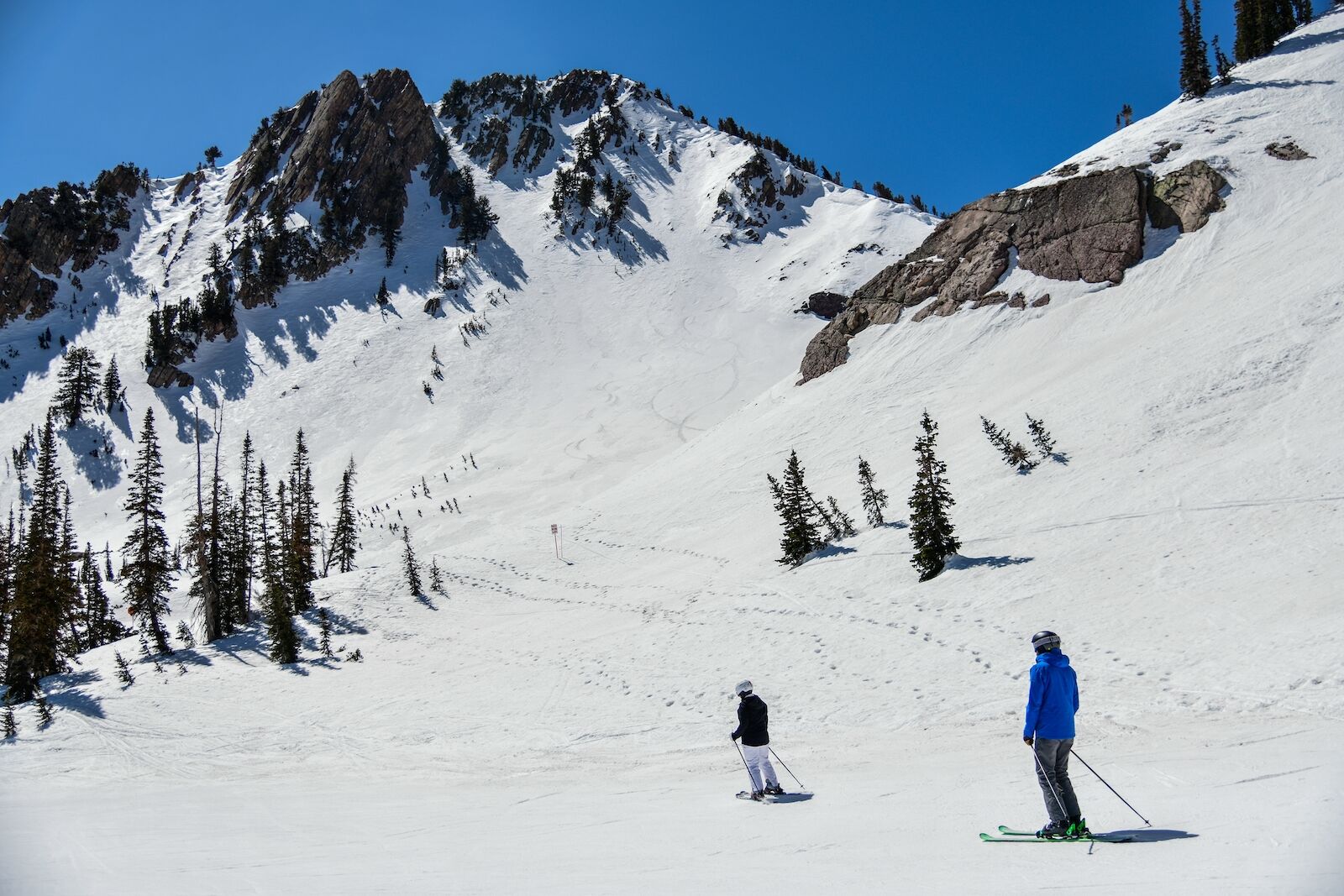
Photo: FashionStock.com/Shutterstock
The final two resorts on this road trip are accessible from Ogden, Utah, or the small village of Huntsville. Snowbasin is about 30 minutes’ drive up Ogden Canyon. With over 3,000 acres of skiable terrain, expert skiers can shred the expansive bowls, steep chutes, and glades that define the resort’s topography. The infamous Grizzly Downhill and Lone Tree couloir – Snowbasin’s answer to Corbett’s Couloir – showcases the resort’s dedication to providing a world-class experience for those seeking a formidable skiing challenge. Furthermore, the absence of crowds compared to other renowned resorts allows expert skiers to carve through the snow with unbridled freedom, making Snowbasin Resort a sanctuary for those who relish the exhilaration of conquering demanding slopes in a pristine alpine setting.
Another must-do is getting to the top of the Allen Peak Tram, which puts you above several tough descents and, if you come with backcountry gear on the right day, an opportunity to exit the resort and ski a tough line back to Ogden (go with a local, or hire a guide).
Powder Mountain
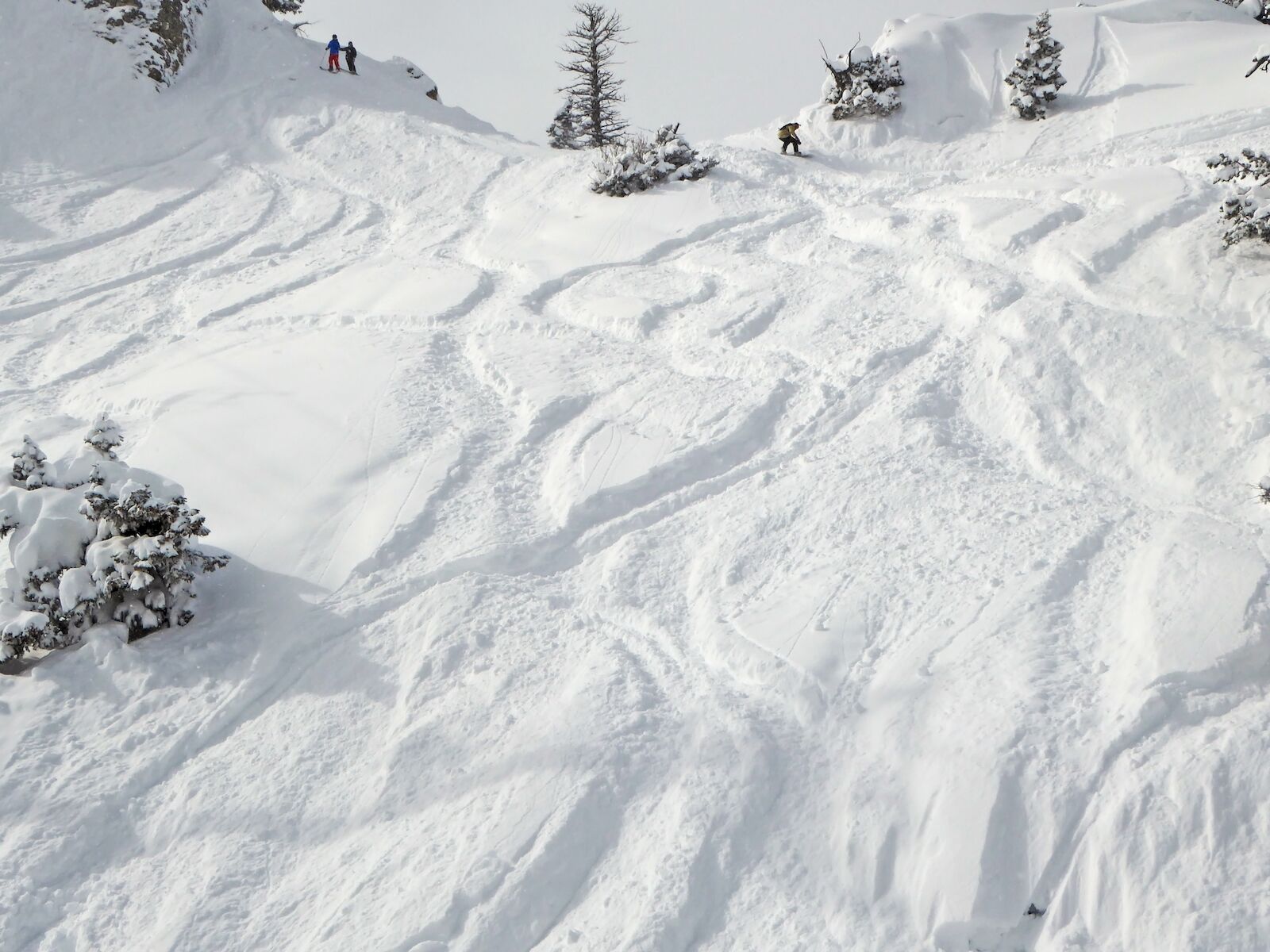
Photo: jennyt/Shutterstock
Powder Mountain, about 30 minutes from Snowbasin outside the tiny town of Eden, is a place of seemingly wondrous contradiction. First, it’s an “inverted” ski area, which means you park at the top and ski down to the lift, finishing your day with a lift ride back to the lodge. Lest you think this means the resort is small and unworthy, fear not – it’s the largest in the US by acreage (over 8,000 skiable acres), and offers the best snowcat-accessed sidecountry in North America. The vibe here is part Silverton Mountain, part Wolf Creek Ski Area, which is to say it’s an experts’ haven that gets pounded by snow (500 inches per year) and has yet to be developed to the tune of major destination resorts. Plus, you can and should ride the snowcat and end up back at the road, where a bus (affectionately called the “high-speed quad”) will return you to the resort.
Among its most difficult ski runs, “Powder Country” stands out as a legendary descent, offering steep pitches, powder-filled glades, and challenging terrain that demands both technical prowess and a taste for adventure. With its expansive and ungroomed nature, Powder Country provides an authentic backcountry experience within the resort boundaries. Another notable expert run is “James Peak,” where steep and narrow chutes, coupled with deep powder pockets, create a thrilling descent for those seeking an intense skiing challenge. The resort’s commitment to maintaining natural conditions and preserving the rugged charm of the mountain ensures that expert skiers at Powder Mountain are treated to an authentic and formidable experience.
Where to stay near Snowbasin and Powder Mountain
To minimize driving, staying near Huntsville. The Escapes at Edgewater offers luxury rentals on Pineview Reservoir. Homes are complete with game rooms, a hot tub, and multiple bedrooms, and are ideal for groups and families. For a more budget-friendly option, stay in Ogden. Near 25th Street, the dining and nightlife hub of the city, the Tru by Hilton is a more budget-friendly option that is walkable to much of the town. Airbnbs abound in Ogden and up the canyon. Nearby Salt Lake City has big city amenities including many Airbnbs and hotels near the airport.
Backcountry touring zones near Ogden
- Powder Mountain: While Powder Mountain is a popular ski resort, it also offers backcountry access. Be sure to check with the resort for any guidelines and restrictions.
- Strawberry Peak: Located east of Ogden, Strawberry Peak offers backcountry terrain with various routes for skiing and snowboarding.
- Malans Peak: This area provides accessible backcountry skiing with beautiful views of Ogden and the surrounding mountains.
- Snowbasin Backcountry: Snowbasin Resort offers backcountry access, and there are various routes around the resort, including the route that ends in Ogden — just make sure you make plans to shuttle your vehicle.
- Skyline Trail: The Skyline Trail extends from North Ogden to Brigham City, offering backcountry opportunities with diverse terrain.
- Maple Canyon: Maple Canyon, located east of Ogden, is known for its ice climbing in winter, but it also provides backcountry skiing options.